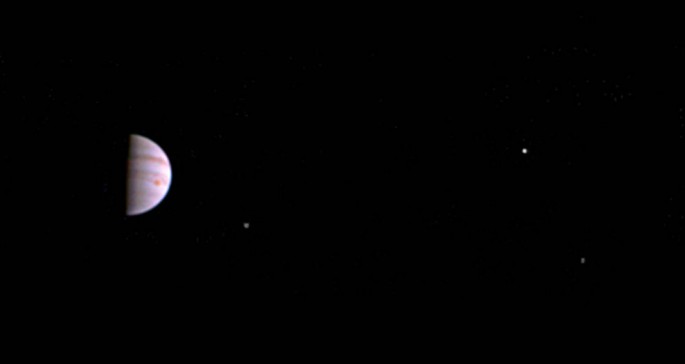After reaching Jupiter's orbital space last week, NASA's Juno spacecraft reveals its first images of the gas giant. The photo shows Jupiter's side where it is already daytime, along with its three largest moons, Europa, Io and Ganymede. The fourth largest moon, Callisto, is not captured from this view.
To date, Juno is adjusting its orbit around Jupiter, moving back from a large arc but will zoom in closer in August where the probe will launch its JunoCam to obtain high resolution images.
Mission scientists also announce that onboard scientific equipment on Juno are still in good health despite Jupiter's massive and highly dangerous magnetic fields around the planet, that can cause intense radiation to fry up these instruments. Orbital capture and insertion occurred last July 4 where Juno successfully entered this highly irradiated environment.
The mission team is now checking all onboard scientific instruments and their status which leads to a calibration period before obtaining new data as Juno begins its observations on Jupiter in October.
In the middle of October, Juno will execute an engine burn that will place the spacecraft in a closer and tighter orbit, lessening this to only a 14 day complete orbit around the gas giant. Following this is a more than 30 revolutions of Jupiter, where its closest approach will reach under 5,000 kilometers from its cloud cover.
This latest image of Jupiter taken by Juno was transmitted on Sunday where the probe is about 4.3 million kilometers away from the massive planet. The photo also reveals Jupiter's famous bands on its atmosphere, streaked with orange, red and purple swirling gases. The Red Spot can also be seen, which is an incredibly massive storm that has been raging on the planet for hundreds of years.
In the next 18 months, the Juno mission will be able to unravel the inner workings of the planet, determining its surface and core. Using these scientific instruments to peer through the planet's deep interior, scientists should be able to find clues about Jupiter's chemistry and its evolution as a gas giant some 4.5 billion years ago.



























